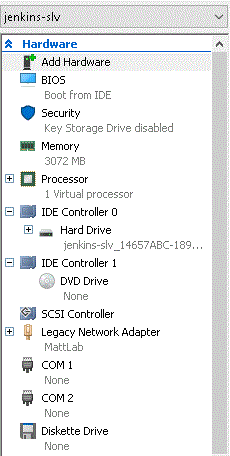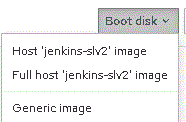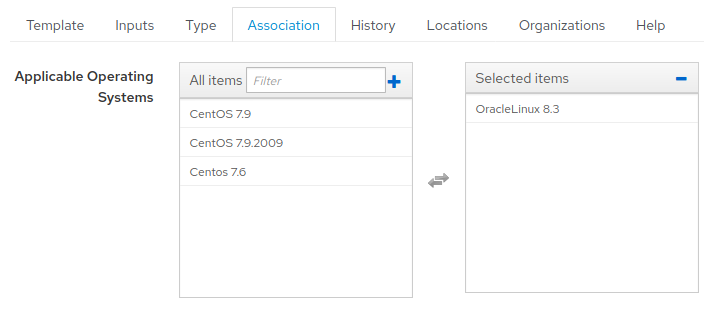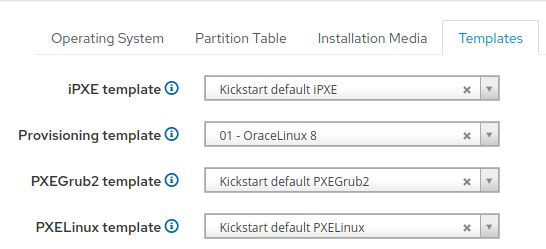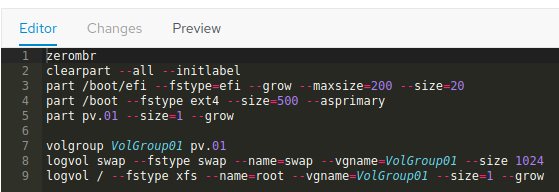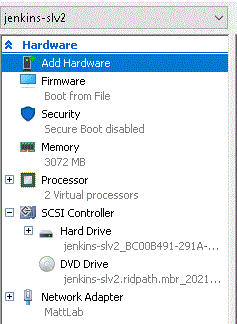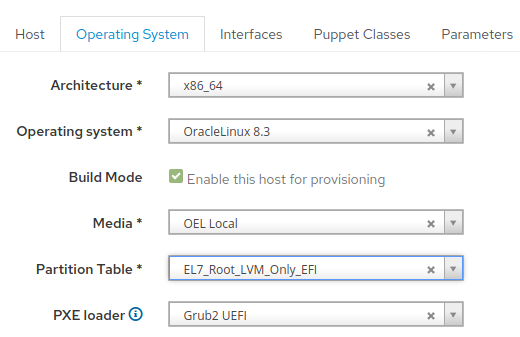Recently I have started to take more time to learn Ansible, building role-based projects similar to what I’ve always done with Puppet, as opposed to simple monolithic playbooks. I still believe Puppet is superior to Ansible when a host has a long list of items to be managed, whereas Ansible excels for more narrowly-scoped tasks such as pushing some files out and restarting a service. However, I’m sure that most would disagree with me, and in my lab I have chosen to use Ansible for most tasks in keeping with the latest trend. For this case, I created a simple Ansible project to set up a CentOS/EL8 Jenkins build node running Docker. The directory structure of this project is below:
├── inventory
├── jenkins_build.yml
├── roles
├── docker
│ └── tasks
│ ├── install.yml
│ ├── main.yml
│ └── service.yml
├── jenkins_node
├── files
│ └── jenkins.pub
└── tasks
├── install.yml
├── main.yml
└── user.yml
First, I created a simple inventory file. The inventory just has one host for now with no variables.
[jenkins_build] jenkins-node2
I then created a simple playbook, jenkins_build.yml, that includes the two roles I need.
---
- hosts: jenkins_build
roles:
- docker
- jenkins_node
Next, I created the roles with mkdir -p roles/docker/tasks and mkdir -p roles/jenkins_node/{tasks,files}. This project is extremely simple; it does not use templates, variables, handlers, etc. and probably could have just used a monolithic playbook for brevity’s sake. However, I decided to use the full directory structure so that the roles could be reused later.
First, I’ll go over the Docker role. All it does is install the docker-ce packages from Docker and ensures that the service is running. The install yml file also needs to install the Docker GPG key:
---
# install.yml
- rpm_key: state=present key=https://download.docker.com/linux/centos/gpg
- yum_repository:
name: docker-ce-stable
description: Docker CE Stable - $basearch
baseurl: https://download.docker.com/linux/centos/$releasever/$basearch/stable
gpgcheck: yes
gpgkey: https://download.docker.com/linux/centos/gpg
- yum: name=docker-ce state=installed
--- # service.yml - service: name=docker state=started enabled=yes
main.yml includes both of the above:
- include: install.yml - include: service.yml
Next, the Jenkins node role: this role installs the required packages and creates the jenkins user. First, you will need a generate a password hash for the Jenkins user. To do so, execute the below Python one-liner:
python -c 'import crypt,getpass;pw=getpass.getpass();print(crypt.crypt(pw) if (pw==getpass.getpass("Confirm: ")) else exit())'Then include the resulting hash in your user.yml file:
---
- user:
name: jenkins
state: present
password: 'hash'
group: users
groups:
- docker
- ansible.posix.authorized_key:
user: jenkins
key: "{{ lookup('file', 'jenkins.pub') }}"
state: present
If you want your Jenkins server to connect to the node using an SSH key, you will need to place the public key in a file located in files. I created this file as jenkins.pub. Then create the .yml files that install the necessary packages and include the tasks.
# install.yml
---
- yum:
name:
- git
- java-1.8.0-openjdk
state: installed
# main.yml --- - include: install.yml - include: user.yml
Finally, run the playbook against the Jenkins build node from a host with Ansible installed. You might want to run it first with the -C option to ensure that it does what you expect it to do:
ansible-playbook -Kkb -i inventory -D jenkins_build.ymlIf this was successful, you should then be able to add the node to Jenkins, located at Dashboard > Manage Jenkins > Manage Nodes and Clouds > New Node:

This concludes my blog post. This is a rather simple Ansible task, but demonstrates a use case for it, especially if you are setting up a bunch of build nodes for Jenkins. In my next post I will show how I configured a Jenkins job to build an RPM in a Docker container on the node I added here.

